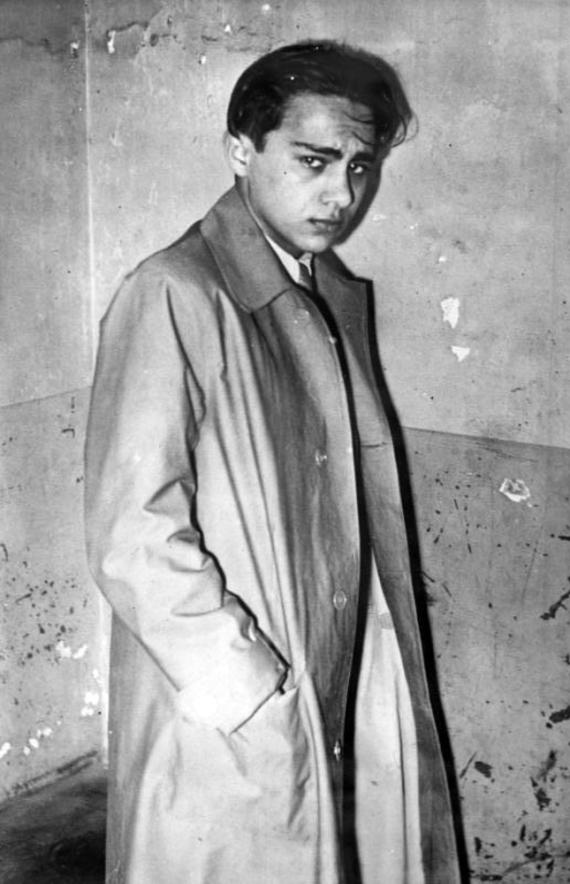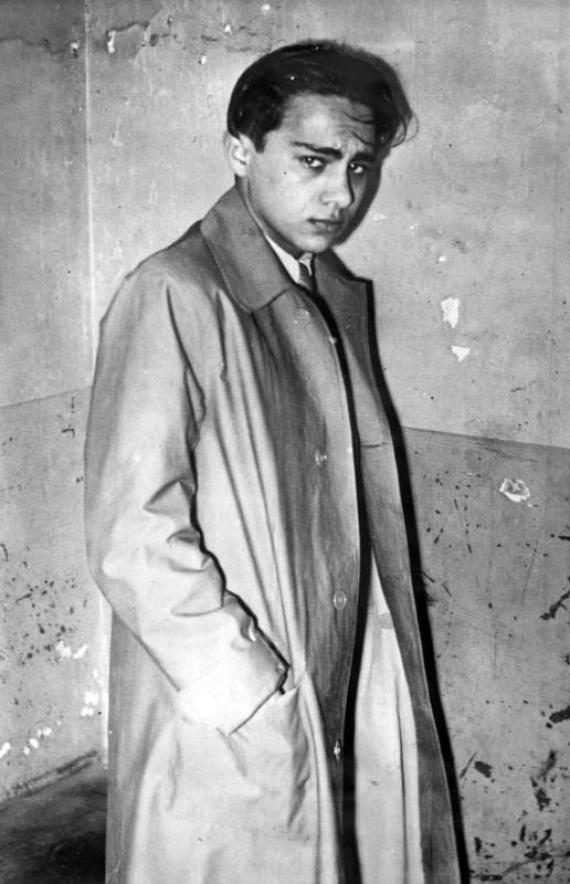Pferdestraße 6
30159 Hannover
Germany
Herschel Feibel Grünspan (also: Grynszpan) was born in 1921 at Burgstraße 36 in the middle of Hanover's old town. His parents had emigrated to Germany from Russian Poland only in 1911. After the foundation of Poland, they received Polish citizenship in 1919, but remained in Germany.
Deeply religious, Herschel transferred to a Jewish religious school in Frankfurt am Main after the end of compulsory education. He breaks off the five-year education, however, and goes to live with an aunt in Brussels in July 1936 and then illegally with an uncle in Paris. There he receives the desperate news by letter of the deportation of his family from Hanover to Poland. On the morning of the seventh of November, he fires five shots at an employee in the German embassy. He succumbs to his injuries on the afternoon of November 9, 1938. The German propaganda machine immediately starts to rotate. The single act becomes a Jewish attack on the German people. The Nazi party uses the attack as a pretext for an orgy of violence ("Reichspogromnacht").
The perpetrator allows himself to be arrested by the French police without resistance and is remanded in custody. Interrogations follow, a trial is prepared. After the German victory over France in the spring of 1940, he is extradited by the collaborationist Vichy government and transferred to the central Gestapo prison in Berlin. Propaganda Minister Goebbels plans a major show trial against the alleged "murderer hired by world Jewry." Probably in view of the danger that the victim's homosexuality might become known, he refrains from doing so on Hitler's instructions. The fate of Herschel Grünspan gets lost in the concentration camps and prisons of Nazi Germany. Herschel's parents and brother survive the Holocaust - after the German invasion of Poland they are able to escape to the Soviet Union. Sister Esther is murdered in an unknown place.




Autor/-in unbekanntUnknown author
The following is the original historical description, which the Federal Archives have adopted for documentary reasons. However, it may be erroneous, tendentious, outdated or politically extreme. This description is tendentious or incorrect: Nazi propagandaThe Jewish assassin. The Polish Jew Herschel Seibel Grynszpan, who seriously injured the Legation Secretary vom Rath of the German Embassy in Paris yesterday with revolver shots, after his arrest.
8.11.38
Add new comment